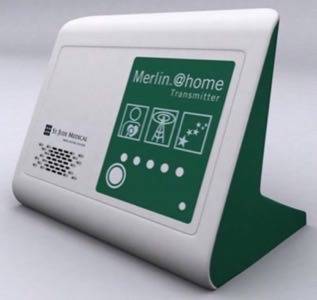MQTT is an IBM-developed protocol for real-time messaging that could become a keystone of the emerging Internet of Things. As the BBC explained recently, MQTT (which stands for Message Queuing Telemetry Transport) is “a platform-agnostic system which can connect almost any networked object to the wider world.” MQTT is used as a messaging protocol for sensor and actuator solutions – for example in the house that twitters, which we covered earlier this week.

According to one of its creators, Andy Stanford-Clark from IBM, MQTT is “going to explode” in popularity this year and next year. The protocol has just turned 10 years old; indeed there was a party to celebrate in London this week. In this post we explain MQTT and look at a health care product that uses it.
The topic of MQTT came up in my conversation with Andy Stanford-Clark this week, when I asked him for his thoughts on Pachube – an open source Internet of Things platform that we have featured a couple of times on ReadWriteWeb.

Stanford-Clark told me that Pachube is “very cool, as far as it goes.” But he said that it hasn’t got “true push.” To get your data out of Pachube, Stanford-Clark explained, you have to poll it (i.e. it’s a pull system, rather than push). So in order to get real-time data, you’d need to be constantly polling Pachube. A better way to do it, according to Stanford-Clark, is have data pushed to you. This is what MQTT enables. Stanford-Clark noted that oil pipeline monitoring systems make use of push messaging systems.
MQTT in Action: St. Jude Medical Center
A real-world implementation of MQTT is a project that IBM did with the Merlin System at St. Jude Medical Center, which is using sensors for home health care. St. Jude Medical designed a cardiac device called the Merlin@home, a wireless transmitter that enables home monitoring of patients implanted with cardioverter defibrillators (ICDs) and pacemakers (both are basically types of sensors).

The product uses MQTT to call back to the doctor/hospital whenever there is a data update, which the hospital then stores.
St. Jude Medical Center explained in a press release how their device improves patients lives:
“Until recently, patients with implanted cardiac devices were typically required to visit doctors’ offices several times per year to have their device performance checked. With the advent of transmitters capable of downloading and transmitting device data over telephone lines, patients are now able to initiate and perform many of these follow-ups in their own homes.”
The Merlin@home transmitter uses RF wireless telemetry to transfer data to the Merlin.net PCN, a secure Internet-based data management system. The data may then be reviewed at any time by the patient’s physician.
The transmitter device has, according to IBM, a “large viewing screen with touch-point capabilities, an embedded keypad platform and a Linux-based operating system.”
I’m sure we’ll see many more implementations of MQTT over the coming years. For the web geeks amongst you, particularly those interested in sensors and real-time messaging, it’s a protocol to keep your eye on.










